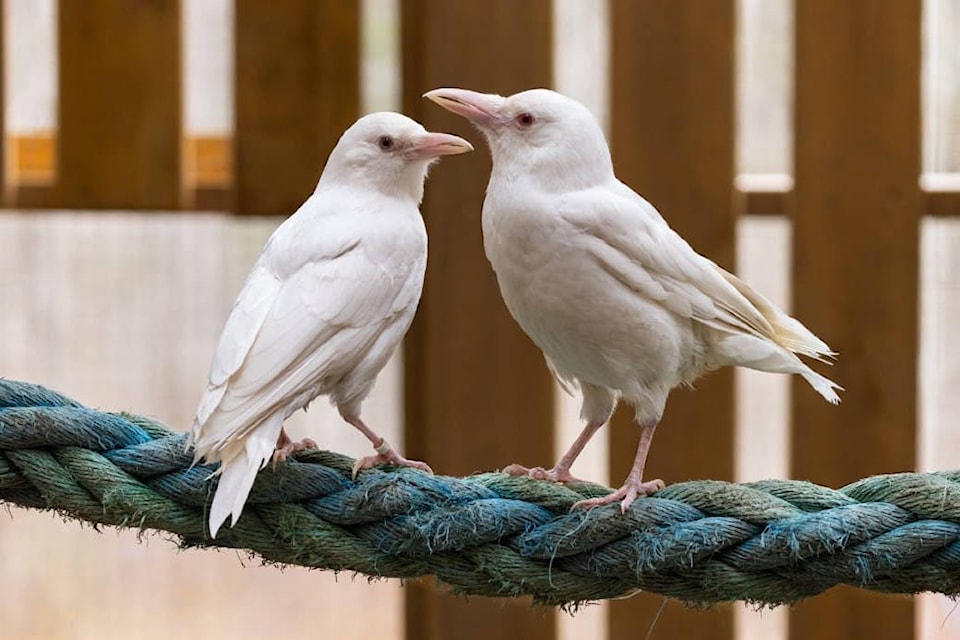Mountainaire Avian Rescue Society volunteers have been busy building new aviaries and putting in native plant gardens and trails at the Vancouver Island wildlife rescue centre. Their hard work is about to pay off, as the MARS Visitor Centre in Merville reopens to the public in June, after an extended closure due to COVID restrictions.
People can book for a group of up to eight, for one-hour tours, Friday to Sunday between 10 a.m. and 2:30 p.m.
And there’s some news to share about a couple of recent additions to the MARS flock.
“Along with our resident eagles, owls and hawk, we will be introducing our newest Ambassador birds, Nimpkish and Kokish, rescued from ‘Namgis First Nations territory near Port McNeill,” said Jane Sproull Thomson, in her monthly update. “These beautiful albino siblings are very active and great fun to watch.”
Often people refer to white or partially white birds as “albinos,” however many of these birds are not albino but rather leucistic, a condition that causes a lack of dark pigments but allows for other colours, mainly reds and yellows. Genetics determines the amount of pigment loss.
READ MORE: Meet Walter: The rare white crab who’s one in a million … or 6 million!
True albinism is a much rarer genetic condition affecting all the pigments. Albino birds have no colour whatsoever in their feathers or in the skin. They often have pink or reddish eyes, legs, feet, and a pale bill; the result of blood vessels showing through, rather than pigmentation.
Leucistic and albino birds face special challenges in the wild which make them less likely to survive. The genetic problems of albino birds extend to poor eyesight, extreme sensitivity to light and poor depth of field vision.
“Learn more about leucism, albinism and another variation called morphism when you visit,” said Sproull Thomson. “The Visitor Centre has new picnic tables, trails and a viewing blind and the gift shop with unique wildlife-related items will be open, so come out and see what’s new! Please leave your pets at home as they upset our wildlife patients.”
Learn more and plan your visit at marswildliferescue.com
Plan your future adventures throughout the West Coast at westcoasttraveller.com and follow us on Facebook and Instagram @thewestcoasttraveller. And for the top West Coast Travel stories of the week delivered right to your inbox, sign up for our weekly Armchair Traveller newsletter!
